Nutritious Green Foods You Didn’t Know About
Good nutrition is all about variety! Browse through our list of unusual fruits and veggies and give yourself a chance to try something new.
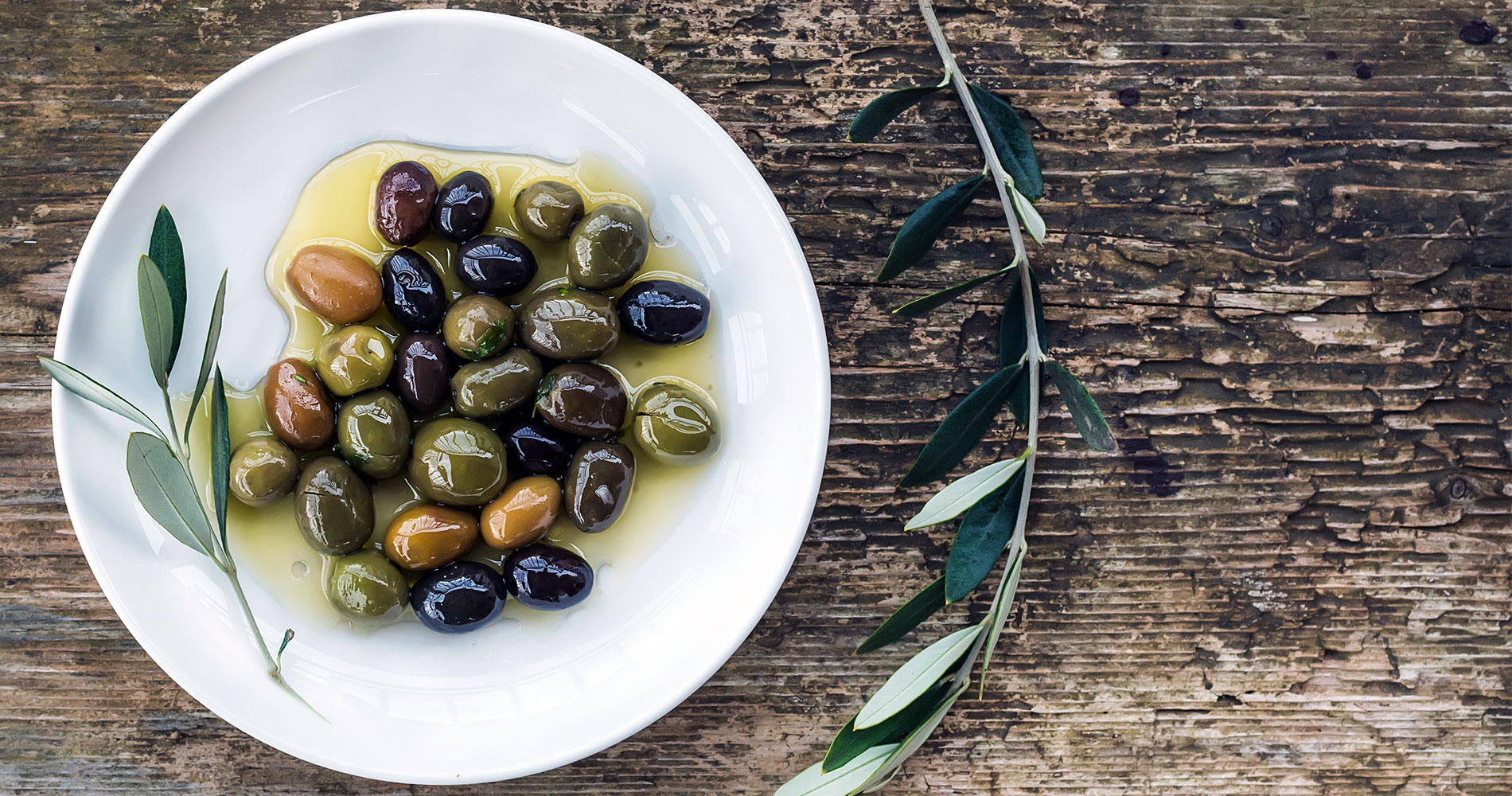

I’ve been doing some research and came across the Mediterranean diet as a great way to maintain a healthy weight as well as gaining many lifelong health benefits from the foods/ingredients it’s centered on. Are you familiar with the Mediterranean diet and if so any pointers for transitioning from one diet to a different diet?
– Shelby G.

The key specifics of a Mediterranean style diet depend on who you ask, since it is truly a reflection of a regional dietary pattern, not from one particular person, author or company.
Bordering the Mediterranean Sea are Southern Europe, Western Asia and Northern Africa. Dietary patterns from countries of the latter two started to be referred to as a “Mediterranean Diet” in the 1960’s. According to the Mediterranean Diet, the major source of calories come from grains, fats and oils, with less meat (predominantly beef, pork, and mutton) than other areas, and the remainder of protein is obtained from dry beans and chickpeas1.
Based on the observed health status of southern European countries, the Mediterranean pyramid was introduced in 1993 and serves as the basis for what most people now refer to as the “Mediterranean Diet”, which is what I’ll address.
The Mediterranean style diet emphasizes whole grains, fruits, vegetables, beans, herbs, spices, nuts and healthy fats as core foods. Within the main portion of the pyramid you will find traditional foods such as olive oil, pine nuts (pignolias), broad beans, lentils, chickpeas, barley, oats, potatoes, hard winter wheat, apricots, dates, figs, grapes, melons, pomegranates, broccoli, cabbage, cucumbers, eggplant, mushrooms, onions, peppers, tomato, and zucchini.
Oldways, one of the founders of the original Mediterranean pyramid states “Fish and seafood are typically eaten at least twice a week, and dairy foods – especially fermented dairy like yogurt and traditional cheese – are eaten frequently in moderate portions. Eggs and occasional poultry are also part of the Mediterranean Diet, but red meat and sweets are rarely eaten.”
As far as weight maintenance goes, research shows a definite positive effect for those following a Mediterranean style diet. I could list all sorts of individual studies, but researchers have already compiled all of the findings into a summary2. Weight and body mass index tend to go down (coupled with exercise and energy restriction) on a Mediterranean diet, especially if done over 6 months. This would seem surprising, given that fat provides over 30% of calories. The power of whole grains, ample produce and limited saturated fat are the trick!
Besides the change in lifestyle (shopping/cooking), I’d consider your gut happiness in transitioning from one diet to another. A drastic change in intake can upset your intestines. If you have a sensitive stomach, consider incorporating only a few new items daily. After 2 or 3 weeks you should have fully transitioned into your new dietary pattern.
References:
– Debbie J., MS, RD
This article should not replace any exercise program or restrictions, any dietary supplements or restrictions, or any other medical recommendations from your primary care physician. Before starting any exercise program or diet, make sure it is approved by your doctor.
Some questions have been edited for length and/or clarity.
 Have a nutrition question? Our registered dietitian is ready to help!
Have a nutrition question? Our registered dietitian is ready to help!
Email nutrition@lafitness.com or submit your question below and it may be featured in an upcoming article!
Good nutrition is all about variety! Browse through our list of unusual fruits and veggies and give yourself a chance to try something new.
Does liberally salting your food help you pump more iron in the gym? Registered Dietitian, Debbie James, investigates the claims!
One frequently asked question is about the recommended intake of protein. We hear you! Here is everything you need to know.


Chef Meherwan Irani
Q: For our vegetarian and vegan readers, what are some non-meat, high protein foods you’d recommend for those wanting to increase their protein levels?
Chef Meherwan Irani: Most Indians are either fully vegetarian or eat meat sparingly. Though the primary driver of vegetarianism is religious and cultural, many non-vegetarians still eat meat sparingly for economic reasons. So, as a country of now over a billion people, Indians have traditionally looked to legumes and dairy as the primary source of protein. Lentils, chickpeas, and beans are transformed into fragrant daals and stews, almost always served with rice. Dairy in the form of milk, yogurt, cream, and ghee (clarified butter) is also a big part of the diet, with ghee used for cooking more extravagant meals, and yogurt used as a ubiquitous heat quencher and digestive. For vegan versions of lentil dishes, skip the ghee and use oil – peanut, mustard, and coconut oils are traditionally used and packed with flavor.
Q: Carbs sometimes get a bad rap. At Chai Pani Decatur, what are some carb-friendly, healthy dishes that you’d recommend?
MI:
Q: How did you choose your featured dish (Desi Salad)?
MI: Indians don’t really do salads. We like our greens dark, leafy, and stewed, braised, or fried with spices. But I personally love salads, and came up with the idea of a crunchy, crispy salad that had Indian flavors and wasn’t overwhelmed with spice, but instead is light, bright, and flavorful. Topped with toasted masala cashews and a skewer of grilled paneer (Indian farmer’s cheese) or tandoori spiced chicken, it’s a low carb, high protein dish that’s so delicious you might just forget you’re eating a salad!
Q: What are some health-conscious and unique Irani foods you’d recommend our readers try when they want to mix things up?
MI: Irani’s do love meat and tend to cook heavy. For my restaurants, I took some of my favorites and lightened them to be not only healthier, but more flavorful. For example, Kheema Pav (a spiced lamb hash) is usually pretty fatty and greasy (although delicious) in traditional Irani cooking. I often substitute ground turkey or chicken for lamb, and add tomatoes and lots of fresh cilantro to lighten the dish and add a punch of flavor and fragrance. Serve it over rice, on a low carb bun (sloppy joe style) or in a corn tortilla with lots of fresh herbs, red onion, radish, diced tomatoes and yogurt for a high protein meal that’s tasty and unique. It’s a one pot dish and easy to make in an Insta Pot or slow cooker. It can stay refrigerated for days, is easy to heat up, and versatile for use in salads, tacos, sandwiches, etc.

Chai Pani Decatur’s Desi Salad
Chai Pani Decatur is located at: 406 W Ponce de Leon Ave, Decatur, GA 30030
Distance to closest LA Fitness: 1.7 mi. (1496 Church St., Decatur, CA 30030)

Combine all ingredients in a large bowl.
Add the toasted masala cashews and blended dressing.
Mix well and let the cabbage marinate for a few minutes.
Serve cold, topped with grilled chicken or grilled vegetables as desired.
Serves: 2-4
Featured Recipes
Good nutrition is all about variety! Browse through our list of unusual fruits and veggies and give yourself a chance to try something new.
Does liberally salting your food help you pump more iron in the gym? Registered Dietitian, Debbie James, investigates the claims!
One frequently asked question is about the recommended intake of protein. We hear you! Here is everything you need to know.


I’m a single bachelor, and I work about 60 to 70 hours a week, so I always end up eating out instead of cooking. I was looking for some 1-pot recipes that I can cook and pack up at work and eat at night as well. Any recommendations?
– Robert W.

I’ve tried a few 30-minute meals recipe books and always found that including pre-cooked meats or already-diced ingredients was a bit of a cheat. But you’ve got to save time somewhere, and it often comes at an expense (of money) or in sacrifice of nutrition. My advice is to either prepare your meats and raw produce in bulk when you bring them home from the store, or buy a few already-prepped convenience ingredients.
One big-time saver is pre-cut fresh produce, such as a container of onion and bell pepper strips or a mirepoix mix of diced onion, celery and carrot. Frozen plain vegetables are simple to microwave or steam. No-salt-added canned corn kernels, sliced beets or diced tomatoes are simple to pop open, drain and add to an appropriate dish for a pop of color, fiber and vitamins/minerals.
Simple, healthy and easy-to-prepare meals often mean 1-pot cooking. For example, in a heated large stir-fry or fry pan, you can start by searing chunks of your preferred protein, add chopped vegetables, then pour in a bagged frozen meal and cooking until heated through when sauce is melted and starch (pasta, potato or rice) is soft. Voila two portions become three with less sodium per serving!
Starting a slow-cooker in the morning makes coming home to a finished meal easier. Choosing your recipe and prepping your ingredients the night before means just turning on the cooker and popping in your food before leaving for work. Remember that smaller chunks of food cook faster. You can adjust heat settings and total cook time for larger items like whole chicken breasts or pork loins.
See our article Inexpensive Meal Prep | Q+A for more tips.
– Debbie J., MS, RD
This article should not replace any exercise program or restrictions, any dietary supplements or restrictions, or any other medical recommendations from your primary care physician. Before starting any exercise program or diet, make sure it is approved by your doctor.
Some questions have been edited for length and/or clarity.
 Have a nutrition question? Our registered dietitian is ready to help!
Have a nutrition question? Our registered dietitian is ready to help!
Email nutrition@lafitness.com or submit your question below and it may be featured in an upcoming article!
Good nutrition is all about variety! Browse through our list of unusual fruits and veggies and give yourself a chance to try something new.
Does liberally salting your food help you pump more iron in the gym? Registered Dietitian, Debbie James, investigates the claims!
One frequently asked question is about the recommended intake of protein. We hear you! Here is everything you need to know.
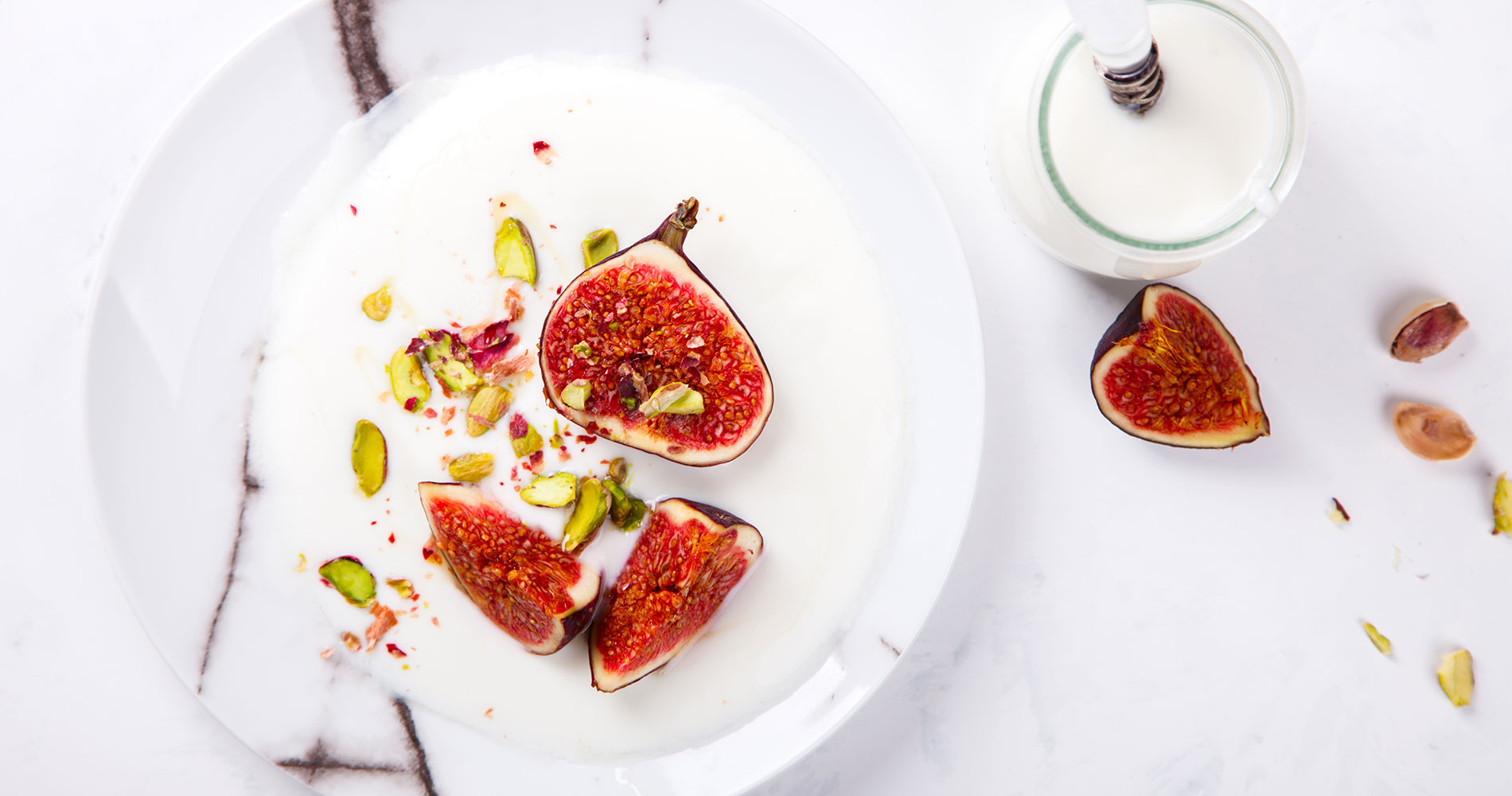
Aaah, the pairing of two foods that harmoniously go together like peanut butter & jelly, or macaroni & cheese, both pleasing to the soul and the palate. Kudos to the first person to combine each of those classics, BTW. Here, we offer our suggestions of more unusual tasty duos that work into a healthy diet. Most items are basic grocery staples that you can find at the corner market. Warning – taste buds beware of surprise!
01.
Blue Cheese & Pear
The slightly bold sharpness of blue cheese balances the mild sweet acidity of pear for a hearty and robust combo.
Examples: Anjou pear, crumbled blue cheese and chopped walnut salad drizzled with honey. Roasted bosc pear halves filled with Stilton, cranberries and slivered almonds. Bartlett pear and gorgonzola flat bread pizza with arugula.
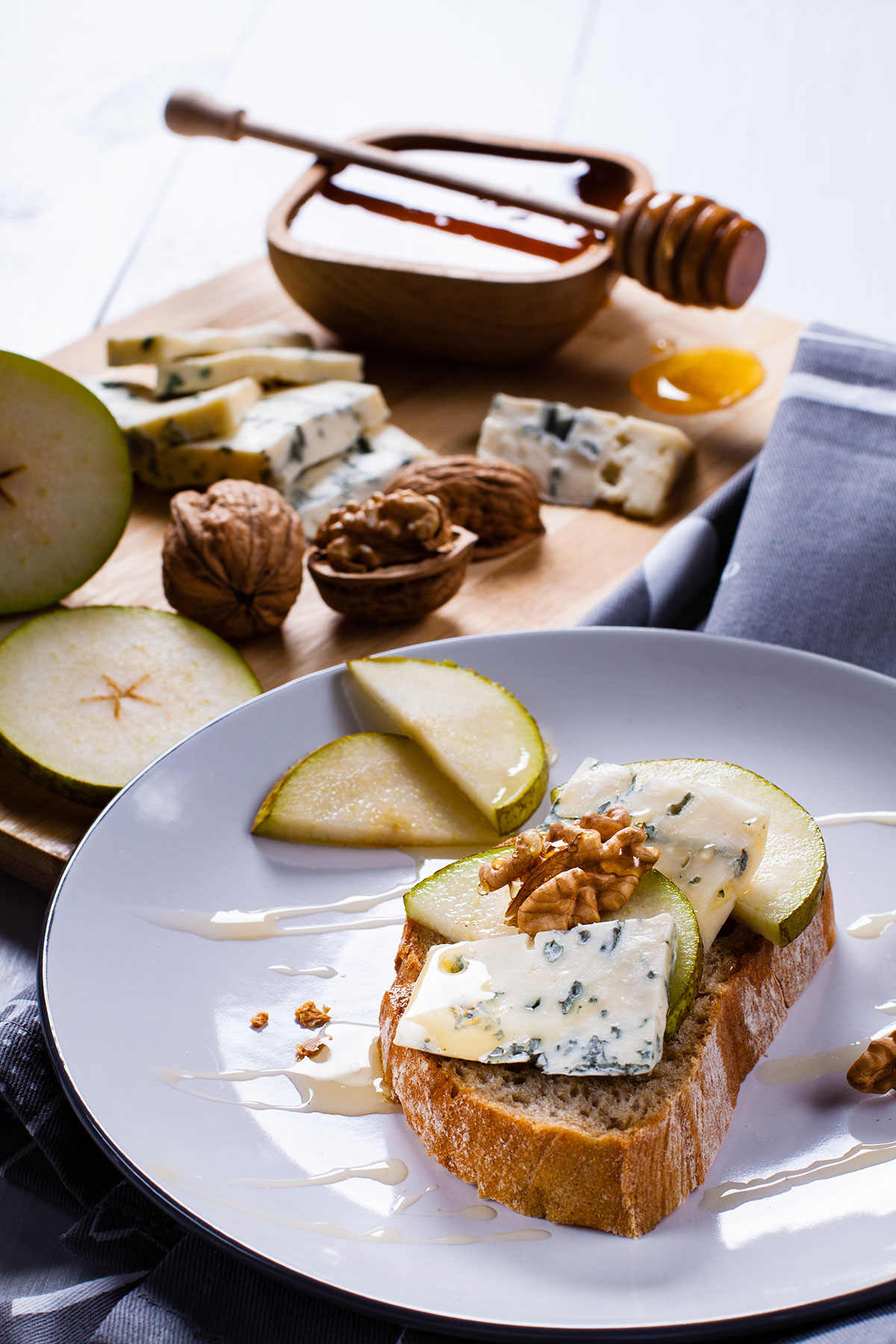
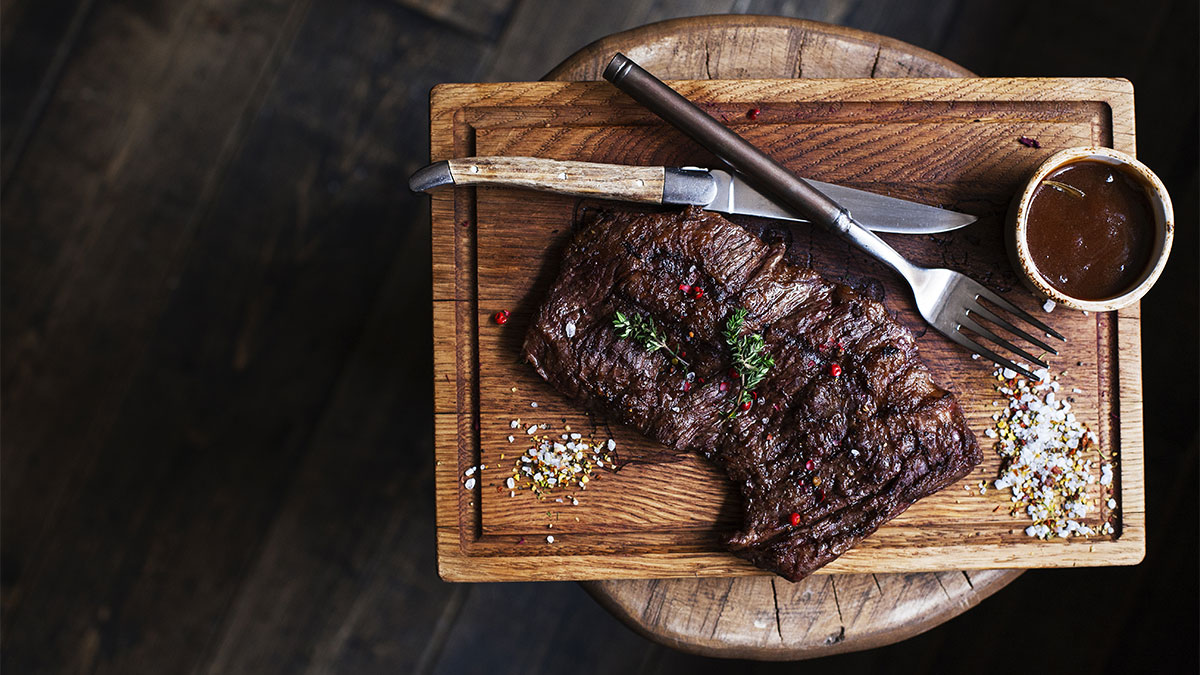
02.
Coffee & Meat
Coffee adds a rich earthy tone to meat, plus it contains natural acids that tenderize. Coffee accentuates the savory flavor of meat while balancing the pepper, chiles and sugars common in meat recipes.
Examples: Fresh coffee grounds and spice dry-rubbed pork loin chops. Add a shot of espresso to lean ground beef chili for a punch. Skirt steak marinated in chilled strong coffee overnight.

03.
Eggs & Green Veggie
Breakfast marries dinner in this combination of protein, fiber and vitamins that can serve as a dish its own right.
Examples: Spinach and poached egg atop 7-grain toast w/ feta. Soft-cooked egg and potato-zucchini hash. Scrambled egg and asparagus with whole wheat noodles.

04.
Figs & Pistachios
This match made in heaven jazzes up plain old bread or crackers and soft cheese for a filling snack with WOW appeal!
Examples: Diced figs and pistachios mixed with honey atop warm brie on a baguette. Fig jam with goat cheese and pistachios atop toast rounds. Fig halves filled with ricotta cheese and toasted pistachios, served with crackers.

05.
Peanuts & Chilies
The heat and crunch from this duo add boldness to plain/mild items like tofu and starches. The intense spicy flavors fade while the satiety of peanuts last.
Examples: Peanut butter and sriracha sauce on a side dish of noodles. Finely diced peanuts and jalapeno with cayenne over a scoop of brown rice.

06.
Pomegranate & Meat
The sweet-tart aspect of pomegranate plus the umami flavor of meat make for excellent sweet and savory entrées.
Examples: Glaze roasted chicken with reduced pomegranate juice. Beef chuck roast braised with pomegranate juice and dry red wine.
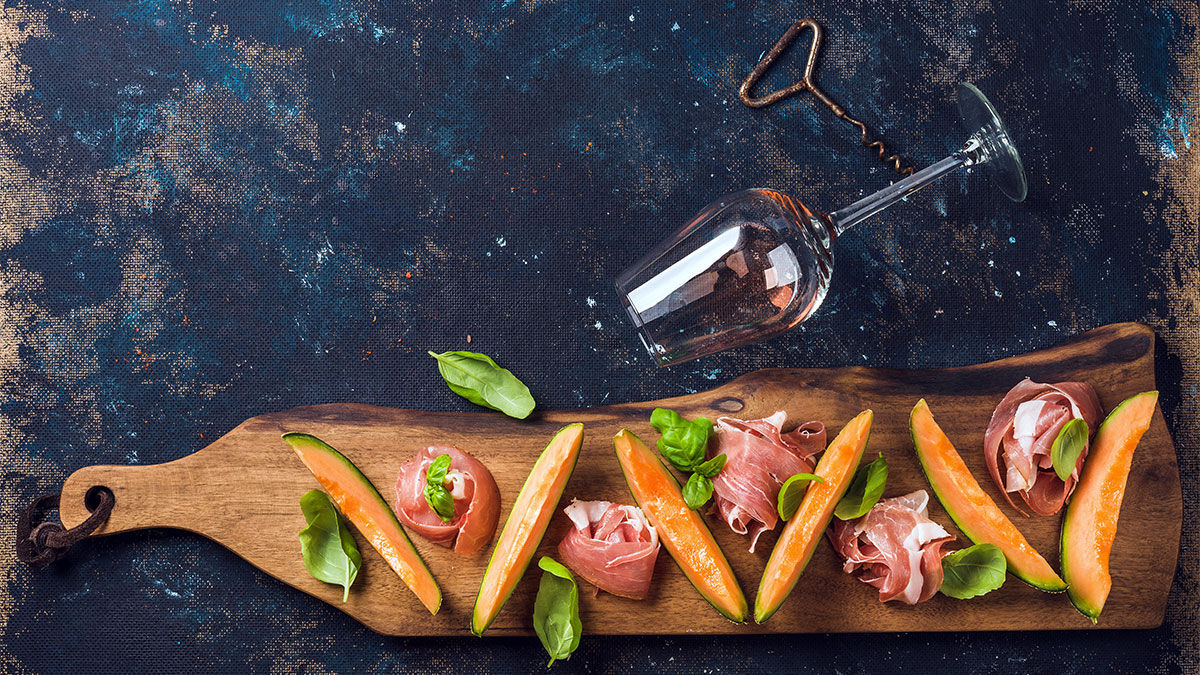
07.
Prosciutto & Melon
Another sweet and savory blend that is a flavorful snack on its own or an addition to green salads.
Examples: Prosciutto wrapped honeydew slices with mint leaves. Caprese-style stacks of prosciutto, cantaloupe and mozzarella slices with basil leaves drizzled with balsamic vinegar.

08.
Sauerkraut & Cheese
The creaminess of cheese with the bite of sauerkraut make for a tangy pair with crunch.
Examples: Grilled Swiss cheese and sauerkraut on rye sandwiches. Layered al dente egg noodles, shredded part-skim mozzarella and sauerkraut, baked as a casserole. Quesadillas made with low-fat cheddar, well-drained sauerkraut and thin Granny apple slices.

09.
Strawberry & Tomato
These vitamin C packed fruits are light and refreshing. Strawberries subtly enhance the sweetness of tomatoes.
Examples: Strawberry and heirloom tomato salad tossed with basil and lemon juice. Strawberry tomato gazpacho. Roasted tomato halves topped with strawberry slices, fresh tarragon and oregano, drizzled with apple cider vinegar.

10.
Vinaigrette & Fish
The acidity and herbs from vinegar-based sauces (plus fat from the oil) make for tender, flavorful fish.
Examples: Vidalia onion vinaigrette over seared or pan-fried tilapia and halibut. Citrus vinaigrette works with stronger fish like tuna or swordfish. Soy vinaigrette on chilled leftover salmon.
Good nutrition is all about variety! Browse through our list of unusual fruits and veggies and give yourself a chance to try something new.
Does liberally salting your food help you pump more iron in the gym? Registered Dietitian, Debbie James, investigates the claims!
One frequently asked question is about the recommended intake of protein. We hear you! Here is everything you need to know.
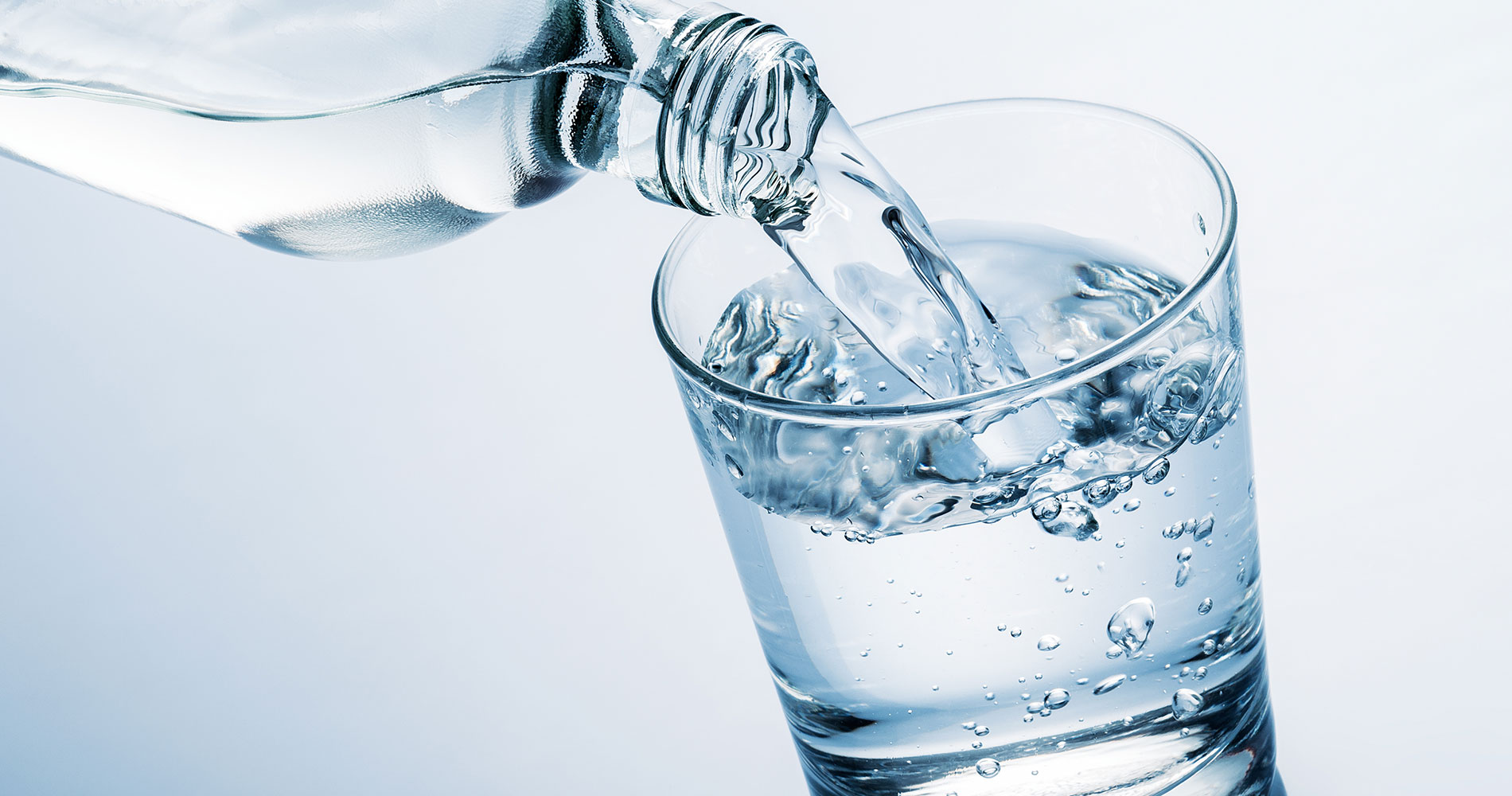

I drink approximately 10 glasses of water a day. Do I need to supplement my water with electrolytes and if I don’t add anything to my water am I washing out nutrients drinking so much water?
– Carmela M.

Your reported water intake may be excessive if you are also drinking a lot of other beverages. If it’s your only fluid intake, then 10 glasses of plain water are fine, assuming you are an active, healthy adult with no medical conditions. True water overload that dilutes blood electrolytes (a serious situation called hyper-hydration or water intoxication) is rare and comes from downing gallons of water in a short period of time.
Thirst is a weak indicator of your hydration status. Better yet, check your urine color. Optimal is a pale yellow like the area circled in the image below:

You shouldn’t need to add electrolytes to your water or worry about flushing out micro-nutrients if you’re generally in this range. A clear or barely perceptible yellow reflects dilute urine, while an amber color is a sign of dehydration.
– Debbie J., MS, RD
This article should not replace any exercise program or restrictions, any dietary supplements or restrictions, or any other medical recommendations from your primary care physician. Before starting any exercise program or diet, make sure it is approved by your doctor.
Some questions have been edited for length and/or clarity.
 Have a nutrition question? Our registered dietitian is ready to help!
Have a nutrition question? Our registered dietitian is ready to help!
Email nutrition@lafitness.com or submit your question below and it may be featured in an upcoming article!
Good nutrition is all about variety! Browse through our list of unusual fruits and veggies and give yourself a chance to try something new.
Does liberally salting your food help you pump more iron in the gym? Registered Dietitian, Debbie James, investigates the claims!
One frequently asked question is about the recommended intake of protein. We hear you! Here is everything you need to know.
Be the first to know about exclusive
content, deals and promotions